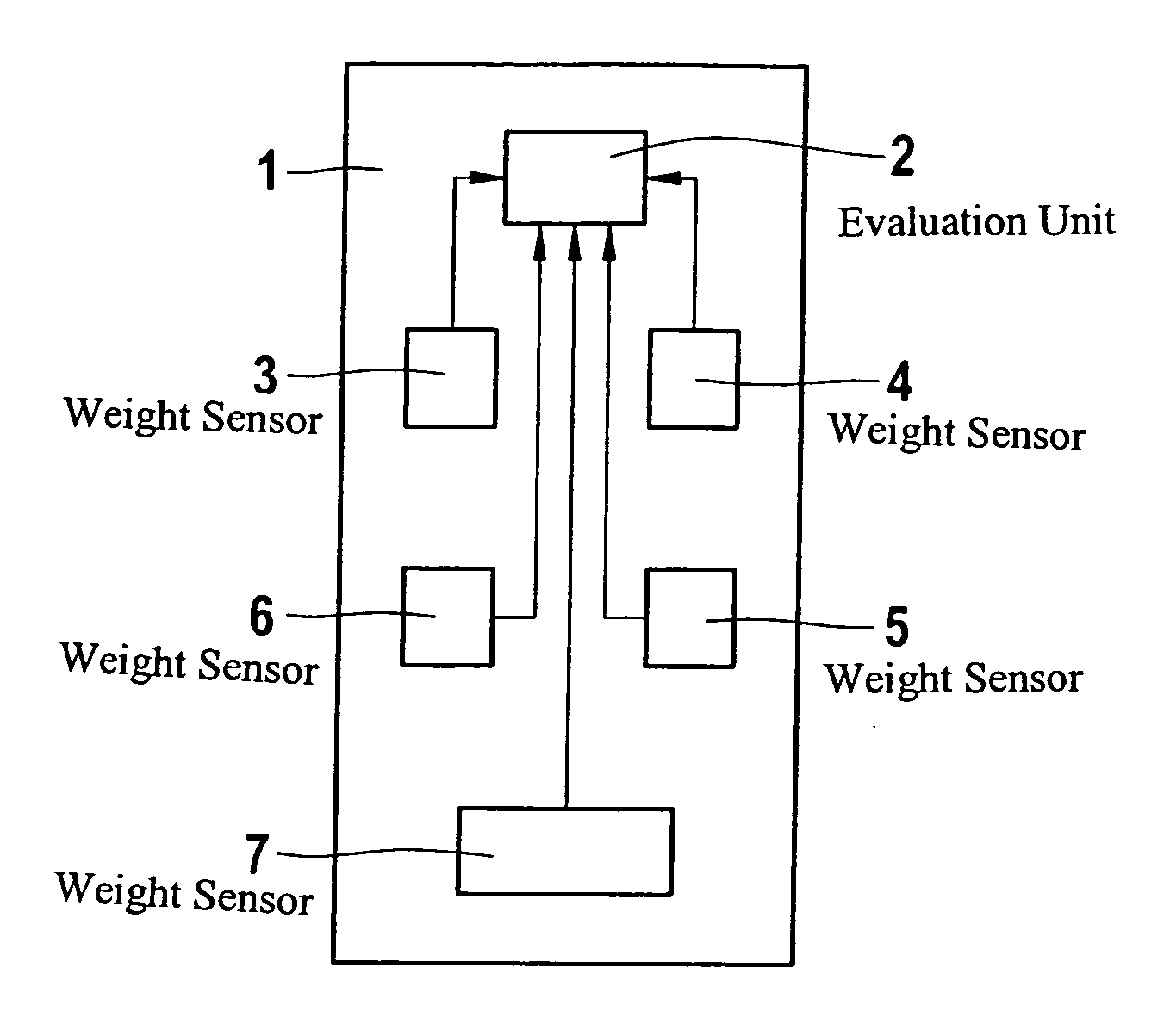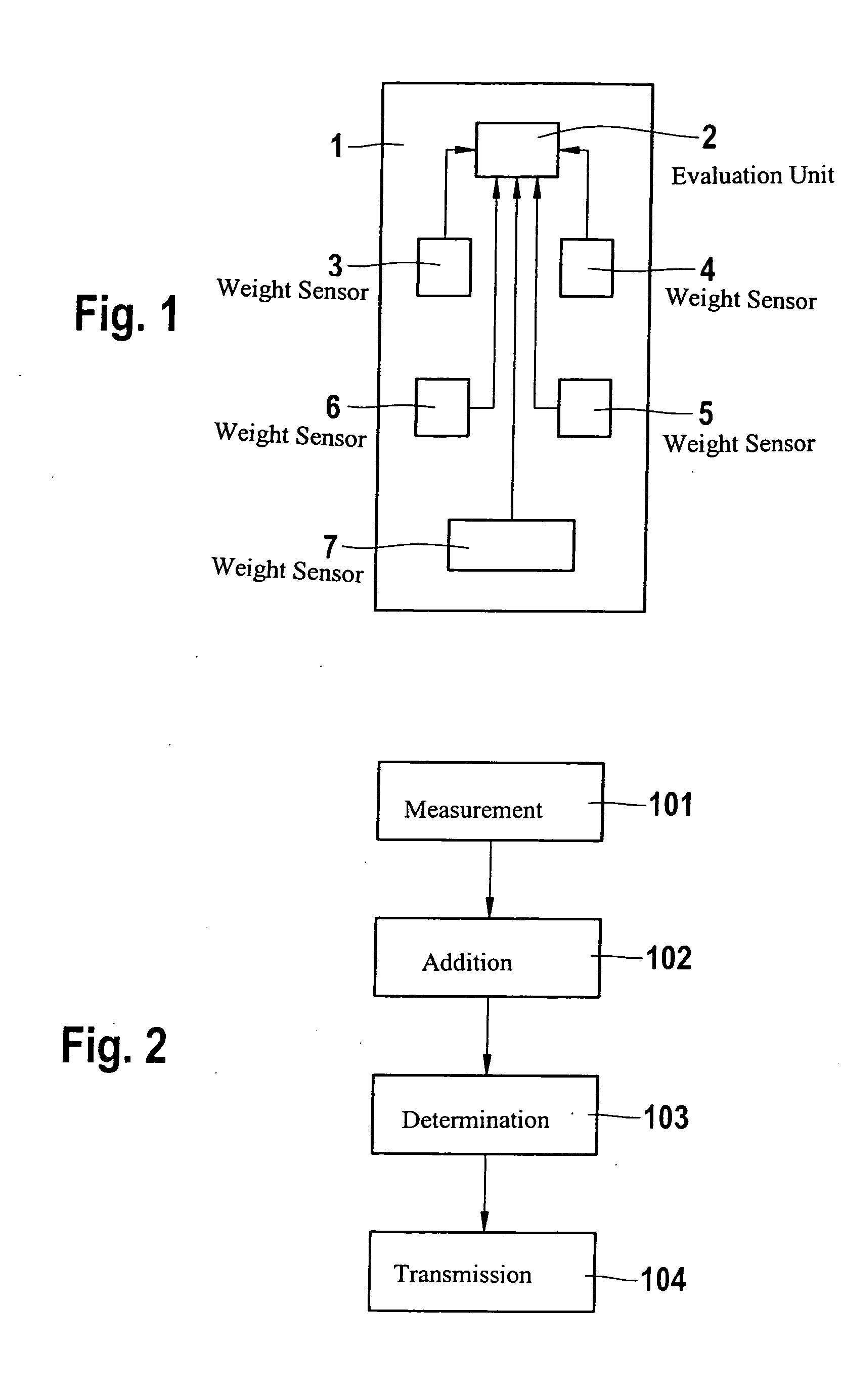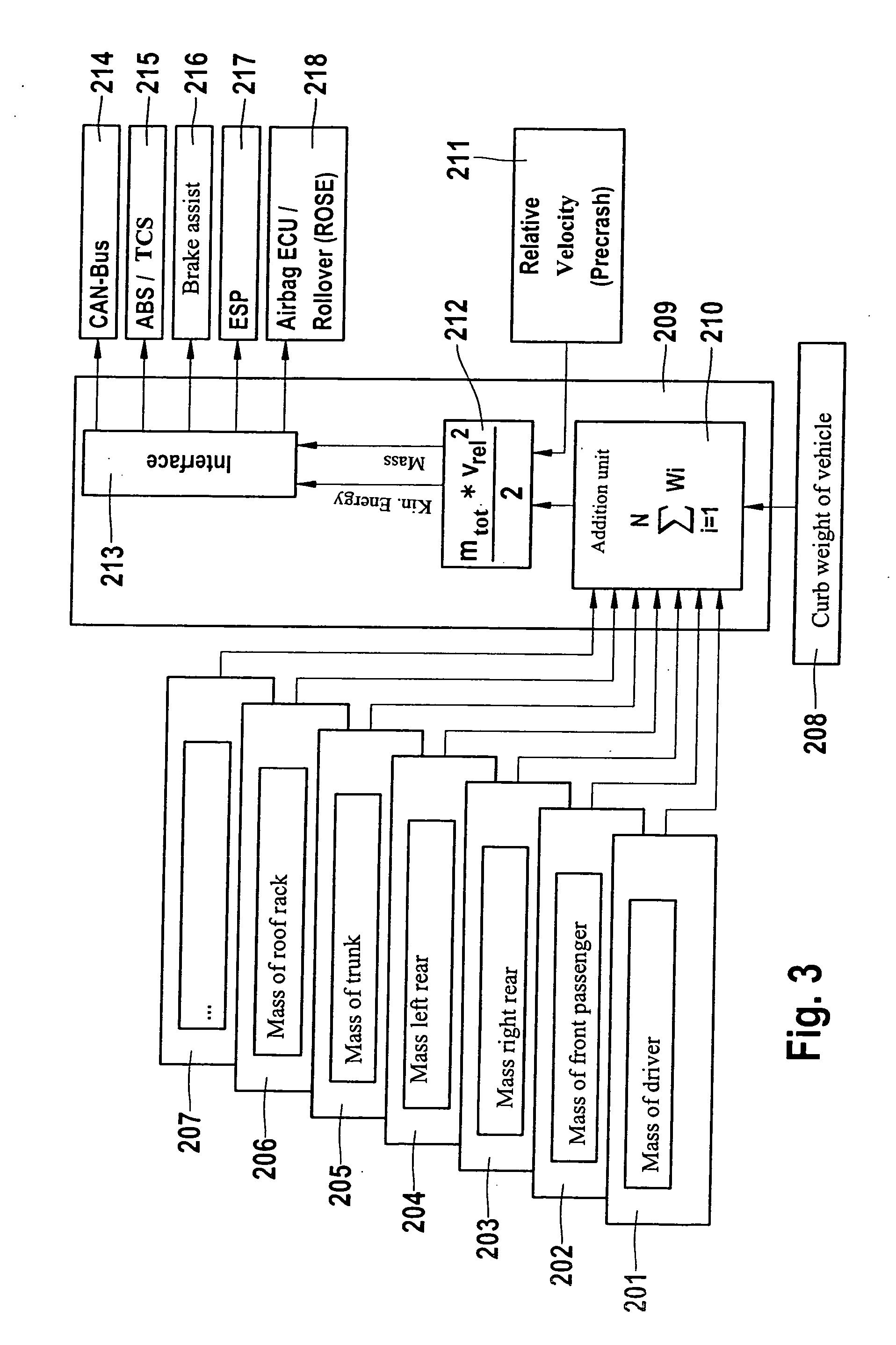Device for determining the overall mass of a vehicle
- Summary
- Abstract
- Description
- Claims
- Application Information
AI Technical Summary
Benefits of technology
Problems solved by technology
Method used
Image
Examples
Embodiment Construction
[0012] Since the introduction of the front passenger airbag, in the course of the improvement of restraint systems, sensors as well as processes have been introduced in the passenger compartment whose purpose is to classify the persons in the compartment. Essentially, the purpose of these systems is to protect the passenger properly in the event of a collision depending on the passenger's mass. For this purpose, various systems will be available in the future that will measure or, as necessary, estimate the mass of the occupant. Additional processes for monitoring the passenger compartment with the aid of video cameras or ultrasonic sensing systems will be designed.
[0013] For determining the total mass of a vehicle, various methods exist that estimate the total mass based on tire pressure, or that estimate the total mass by way of the suspension properties.
[0014] The present invention introduces an apparatus that determines the total mass of the vehicle in a simpler way. It uses i...
PUM
 Login to View More
Login to View More Abstract
Description
Claims
Application Information
 Login to View More
Login to View More - R&D
- Intellectual Property
- Life Sciences
- Materials
- Tech Scout
- Unparalleled Data Quality
- Higher Quality Content
- 60% Fewer Hallucinations
Browse by: Latest US Patents, China's latest patents, Technical Efficacy Thesaurus, Application Domain, Technology Topic, Popular Technical Reports.
© 2025 PatSnap. All rights reserved.Legal|Privacy policy|Modern Slavery Act Transparency Statement|Sitemap|About US| Contact US: help@patsnap.com



